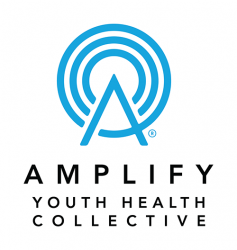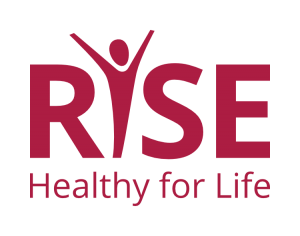What is comprehensive sex education (CSE)? Join us to learn the components of CSE, why it’s important, and how it can benefit your students and your school. We will also discuss the process for getting approval from your school board and how GCAPP staff can support you.
Training Hub
The Sex Education Collaborative Training Hub lists trainings for sex educators, facilitators, and other professionals on best practices for sharing important information with clients and the public. From teaching anatomy inclusively to effectively addressing bias in the classroom to addressing racial justice and equity in sex education, the Training Hub includes trainings, technical assistance, and policy support from state, regional, and national leaders in the field of sex education.
Please note: The Training Hub includes both in-person and online professional trainings. If you see a training you are interested in and it isn’t listed as virtual, please reach out directly to any of our members to find out what's possible!
Trainings Offered by State-Based and National Organizations
Displaying results 6 - 10 of 154CSE 101
- Indicator 1 (K-12): Describe three health (e.g. physical, social and/or emotional) and/or academic benefits of sex education for young people
- Indicator 2 (K-12): Describe state and/or district laws, policies, and standards that relate to sex education where one teaches.
Everyone's an Asset Builder
Research with millions of young people shows the power of people from all walks of life committing to do what they can to support all young people’s success. By participating in this highly interactive workshop, parents, educators, mentors, neighbors, youth workers, and community leaders will:
• understand the strengths and supports that are essential for young people’s success in school, work, and life, based on Search Institute’s research on Developmental Assets
• identify qualities of individuals who play powerful roles in young people’s lives
• discover opportunities in their everyday lives for making a positive difference
• make personal commitments to take personal action to support youth success
This training is appropriate for all trusted adults within the community.
- Indicator 1 (K-12): Demonstrate the ability to build rapport with students. (S)
Sexual Violence in the Media
The media plays a huge role in how we think about sex and sexuality. Using TV clips, movie scenes, ads and songs, we will explore how the media portrays sexual violence. We will also discuss how we can use the media to have constructive conversations regarding sexual violence in our daily lives.
- Indicator 3 (K-12): Describe three strategies for teaching students communication skills.
- Indicator 4 (K-12): Describe three strategies for incorporating the positive and negative impacts of communicating through technology into lessons on healthy relationships.
Accessible Sex Ed Training for Facilitators
This workshop is designed for sex ed and family life educators who want to make their programs more accessible to people with a variety of disabilities, particularly autistic people and people with intellectual and developmental disabilities (IDD).
Adding these skills to your toolbox makes affirming, inclusive education more accessible for all participants..
“Accessible Sex Ed” also covers how to talk with caregivers about the importance of complete, fact-based education for all people, especially neurodiverse folx.
Funding to develop this training was provided in part by the Tennessee Disability Coalition.
- Indicator 1 (K-12): Explain three reasons why it is important to respond to every question students ask when teaching sex education.
- Indicator 2 (K-12): Demonstrate the ability to effectively respond to three different types of challenging questions. (S)
Infusing Consent into Sex Education
Since the start of the "Me Too" movement, more teachers are looking for ways to incorporate consent into sex education. This training will help participants recognize language changes and immediate shifts they can make in existing content and identify various tools, resources, materials, and activities that could be used in classroom related to consent. The training will also review best practices and key messages for teaching consent; particularly being intentional about students at different developmental levels.
In this training, participants will:
- Define consent.
- Discuss the importance of consent education.
- Understand considerations when working with different age groups.
- Review relevant and current data on consent and sex education.
- Practice language shifts in lessons.
- Discuss preparing for disclosures.
- Indicator 1 (K-12): Demonstrate three techniques to create an inclusive and affirming learning environment. (S)
- Indicator 2 (K-12): Demonstrate three strategies for creating culturally responsive classrooms. (S)
- Indicator 3 (K-12): Describe three elements of a trauma-informed approach to sex education.
- Indicator 4 (K-12): Demonstrate three strategies of a trauma-informed approach to sex education (e.g. giving trigger warnings before content on sexual assault and allowing students the right to pass as appropriate, etc.). (S)
- Indicator 4 (K-12): Explain the roles and responsibilities of a mandated reporter.
- Indicator 5 (K-12): Explain the state- and district-mandated reporting requirements and procedures.
- Indicator 1 (K-12): Describe three distinguishing characteristics between healthy and unhealthy relationships, involving family, friends, and/or romantic partners.
- Indicator 3 (K-12): Describe three strategies for teaching students communication skills.
- Indicator 4 (K-12): Describe three strategies for incorporating the positive and negative impacts of communicating through technology into lessons on healthy relationships.
- Indicator 1 (K-12): Describe three health (e.g. physical, social and/or emotional) and/or academic benefits of sex education for young people
- Indicator 2 (K-12): Describe state and/or district laws, policies, and standards that relate to sex education where one teaches.
- Indicator 2 (K-12): Describe how verbal and nonverbal expression of personal values, and comfort with topics related to sex education, could impact one’s teaching
- Indicator 3 (K-12): Explain the importance of educators refraining from sharing their personal values when implementing sex education.
- Indicator 4 (K-12): Demonstrate the ability to respond effectively to students’ values-based comments and questions. (S)
Additional Trainings offered by out-of-state organizations
- ‹ previous
- 25 of 49
- next ›
How to Engage with Students
Engaging with young people in a meaningful way is vital to the success of schools and programs. Join us to learn practical tips and tricks to increase your engagement both in the classroom and virtually.
- Indicator 1 (K-12): Demonstrate the ability to build rapport with students. (S)
- Indicator 2 (K-12): Demonstrate three student-centered instructional approaches that support a variety of learning styles. (S)
- Indicator 6 (K-12): Describe three strategies for actively involving parents, caregivers, and other trusted adults in a sex education program.
- Indicator 7 (K-12): Demonstrate the ability to analyze and tailor lesson plans to match the age, developmental stages, cultural backgrounds, and other identities of students. (S)



